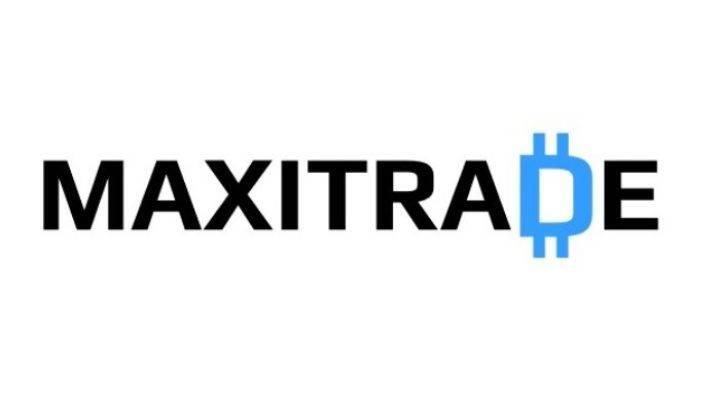Bad Debt Provision: Overview, Calculate, And Journal Entries

The primary difference in benefits is for graduate borrowers who have to wait 25 years for loan forgiveness on SAVE versus 20 years on PAYE. All content on this website, including dictionary, thesaurus, literature, geography, and other reference data is for informational purposes only. This information should not be considered complete, up to date, and is not intended to be used in place of a visit, consultation, or advice of a legal, medical, or any other professional. Double Entry Bookkeeping is here to provide you with free online information to help you learn and understand bookkeeping and introductory accounting.
Credit The amount owed by the customer is still 500 and remains as a debit on the debtors control account. However, the credit above is placed on the bad debt provision account in the balance sheet to reflect the uncertainty over payment. The estimated percentages are then multiplied by the total amount of receivables in that date range and added together to determine the amount of bad debt expense. The table below shows how a company would use the accounts receivable aging method to estimate bad debts. A bad debt provision is a reserve against the future recognition of certain accounts receivable as being uncollectible. Some companies might use the description provision for bad debts on its income statement in order to report the credit losses that pertain to the period of the income statement.
Balance Sheet
The two methods used in estimating bad debt expense are 1) Percentage of sales and 2) Percentage of receivables. In addition, it’s important to note the change in the allowance from one year to the next. Because the allowance went relatively unchanged at $1.1 billion in both 2020 and 2021, the entry to bad debt expense would not have been material. However, the jump from $718 million in 2019 to $1.1 billion in 2022 would have resulted in a roughly $400 million bad debt expense to reconcile the allowance to its new estimate. The entries to post bad debt using the direct write-off method result in a debit to ‘Bad Debt Expense’ and a credit to ‘Accounts Receivable’.

Provision for doubtful debts should be included on your company’s balance sheet to give a comprehensive overview of the financial state of your business. Otherwise, your business may have an inaccurate picture of the amount of working capital that is available to it. US GAAP has also changed in the past few years with respect to classification and measurement, as well as the forthcoming changes to measurement of credit losses. For investments in equity instruments that are neither consolidated nor accounted for under the equity method, IFRS 9 changes their classification and measurement. Under IAS 39, investments in equity instruments were generally classified as available-for-sale and measured at FVOCI or as trading and measured at FVTPL. There was also an exemption that allowed companies to measure equity instruments at cost under very limited circumstances.
What is Accounts Receivable Collection Period? (Definition, Formula, and Example)
Bad debt can be reported on the financial statements using the direct write-off method or the allowance method. Lets say that, at the year end you have seen that you have RS https://online-accounting.net/ 15,00,000 in Debtors Control Account. You estimated that you may not able to collect 2% of such balance and decided to make the provision for this un-collectible amount.
Hospital operating margins, volumes dipped in July 2023 – FierceHealthcare
Hospital operating margins, volumes dipped in July 2023.
Posted: Mon, 28 Aug 2023 20:47:53 GMT [source]
IFRS 9 requires discounting of expected credit losses, but for trade receivables and contract assets without a significant financing component that are short term, it may be possible to conclude that discounting is not material. The term “bad debt provision” refers to creating an asset account that reflects credit balance, which, coupled with the accounts receivable, captures the net realizable value of the company’s debtors. Bad debt provisions are also known as an allowance for doubtful accounts, bad debts, or uncollectible accounts. The allowance for doubtful accounts is a contra-asset account that nets against accounts receivable, which means that it reduces the total value of receivables when both balances are listed on the balance sheet.
Are the Accounts Receivable Current or Non-assets?
When you need to create or increase a provision for doubtful debt, you do it on the ‘credit’ side of the account. However, when you need to decrease or remove the allowance, you do it on the ‘debit’ side. Corporates with highly seasonal revenue patterns, however, may turn to other methods. This is because cash collections from trade receivables either may not follow a linear pattern or may peak dramatically at certain points during the fiscal year. Using a provision matrix approach in such cases could result in loss rates that are not suitable for ECL measurement.
Country Garden Dodges Default With Last-Minute Bond Payments – Bloomberg
Country Garden Dodges Default With Last-Minute Bond Payments.
Posted: Wed, 06 Sep 2023 16:01:48 GMT [source]
The allowance method is an accounting technique that enables companies to take anticipated losses into consideration in its financial statements to limit overstatement of potential income. To avoid an account overstatement, a company will estimate how much of its receivables from current period sales that it expects will be delinquent. Basically, it is an irrecoverable receivable – a type of expense that occurs when a customer to whom you have extended credit is no longer able or willing to pay you. In accounting terms, this is known as a “bad debt expense” which must be charged against your company’s accounts receivable. Reporting a bad debt expense will increase the total expenses and decrease net income. Therefore, the amount of bad debt expenses a company reports will ultimately change how much taxes they pay during a given fiscal period.
Finish Your Free Account Setup
Let us take the example of ABC Inc. to illustrate the process of creating bad debt provisioning. In the year, 2015the company decided to develop a provision for bad debts at 10% of the current accounts receivable, which stood at $ 500,000. In the following two years, the accounts receivable increased to $850,000 and then declined to $650,000. Therefore, prepare the journal entries for the bad debt provision of the three years, i.e., 2015, 2016, and 2017. If the next accounting period results in an estimated allowance of $2,500 based on outstanding accounts receivable, only $600 ($2,500 – $1,900) will be the bad debt expense in the second period. In the online course Financial Accounting, it’s explained that one strategy is to overestimate bad debt provision.
- Therefore, the customer has not been billed completely when the sale takes place so there is still value being created by having this account.
- Sometimes people encounter hardships and are unable to meet their payment obligations, in which case they default.
- Instead, the combined host contract and embedded derivatives are evaluated as a single unit of account; in most cases, this will mean that it does not meet the SPPI criterion and therefore is measured at FVTPL.
- Unfortunately, this method of writing off bad debt violates the
generally accepted accounting principles and is not appropriate for reporting
financial statements with a true and fair view. - This amount must then be recorded as a reduction against net income because, even though revenue had been booked, it never materialized into cash.
The Internal Revenue Service (IRS) allows businesses to write off bad debt on Schedule C of tax Form 1040 if they previously reported it as income. Bad debt may include loans to clients and suppliers, credit sales to customers, and business-loan guarantees. However, deductible bad debt does not typically include unpaid rents, salaries, or fees. The first is the direct write-off method, which involves writing off accounts when they are identified as uncollectible.
Definition of Provision for Bad Debts
A provision matrix is an effective way of measuring ECL consistently from period to period. It may prove especially appropriate for corporates with a high volume of sales and cash collections from trade receivables. However, corporates should use appropriate groupings of trade receivables based on credit risk characteristics (e.g. geography or debtor credit rating), and determine loss rates by group of similar risk characteristics.
- There are several ways to make the estimates, called provisions, some of which are legally required while others are strategically preferred.
- The input will be based on both historical performance as well as adjusting for forward-looking information such as recession, industry specific factors or the effects of the corona virus.
- While your payment will stay capped at a percentage of your income, you may find it’s more than you want to pay.
- This approach may seem similar to how many corporates historically measured their bad debt provisions.
Because the contractual terms of the convertible bond do not give rise solely to payments of principal and interest on the principal amount outstanding on the bond, it fails the SPPI criterion and is measured at FVTPL. This means that the debit entry that will pass through the current year’s profit and loss account will have to be larger. Now, at the end of the current year, a fresh provision will need to be created to bring the provisions account back to the desired level of the given percentage. At the end of 2014, it is not known as to which specific debtor will fail to pay his debts in 2015, though it is known, out of past experience, that some debtors will certainly fail to pay. On 31 December 2014, Mr. David’s debtors stood at $280,000 (after writing off $9,200).
A significant amount of bad debt expenses can change the way potential investors and company executives view the health of a company. Bad debts is the amount of credit sales which can not be recovered or become irrecoverable are called bad debts. It is considered as the business loss of the company and reduced the accounts receivable amount from the books of accounts. A bad debt provision is also known as the allowance for doubtful accounts, the allowance for uncollectible accounts, or the allowance for bad debts. If the actual bad debt was greater than the provision, the bad debt expense must be tracked on the income statement for the same accounting period during which the loan or credits were issued.
When you loan money to someone, there’s an inherent risk they won’t pay it back. This is called credit risk and is typically reflected in the loan’s interest rate; the higher the risk level, the higher the interest rate. It’s an effective safeguard against bad debt and provides confidence to trade. Income Statement is debited what is fixed cost with amount of bad debts and in the Balance Sheet, the Accounts Receivable balance to be decreased by the same amount in the assets side. The loss rate must be adjusted for current conditions and also for ‘reasonable and supportable’ forecasts of future economic conditions over the remaining life of the trade receivables.
